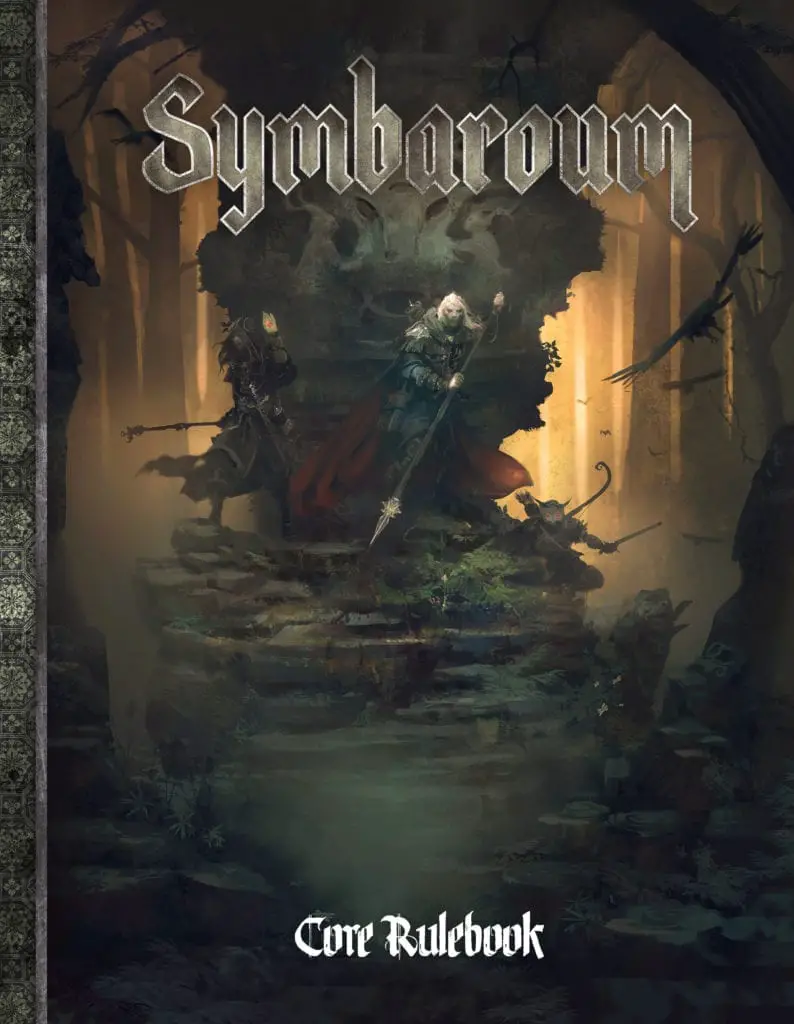Today’s topic of interests in tabletop games is Symbaroum, an RPG from Free League Publishing and Modiphius Entertainment. Unlike Liminal, which I discussed last time, Symbaroum is a dark fantasy game, using the 20-sided die made famous by Dungeons & Dragons and containing a Norse-inspired setting and themes. It’s considered a classic within the Swedish RPG community, but what’s it like once we dig in a little? Let’s begin.
Presentation
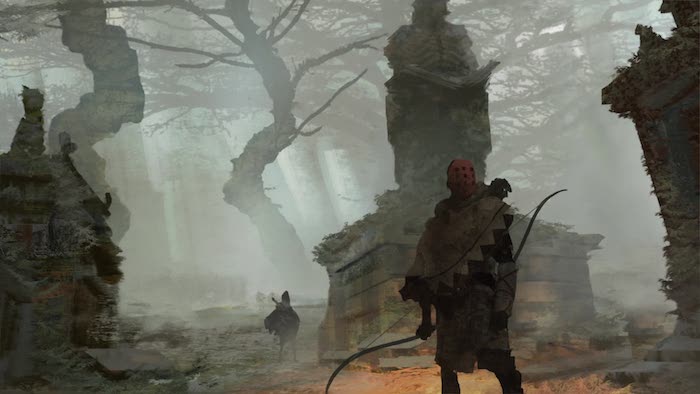
Symbaroum first presents us with a world… or rather, a chunk of one. Much like Liminal, it prefers to focus more on in-depth presentation than trying to cover broad swathes of the world. The book promises more content to come in future material.
The setting we see in the book is the kingdom of Ambria, the dark forest of Davokar and a few other nearby regions. We get a brief history of the place, telling us how the kingdom was founded by people fleeing a land ravaged by a victorious war against dark overlords. The new kingdom took a toll to build — the native population and the less fortunate had paid the price. Davokar, meanwhile, is a massive expanse of forest. It’s full of monsters, magic and a variety of dangers. Ambrians plump its depths to find riches and knowledge, pushed by an expansionist spirit that fills the fledgling kingdom. This is where we will see the game’s name in earnest — the dark wood is supposedly what remains of the seat of the ancient Symbaroum civilization.
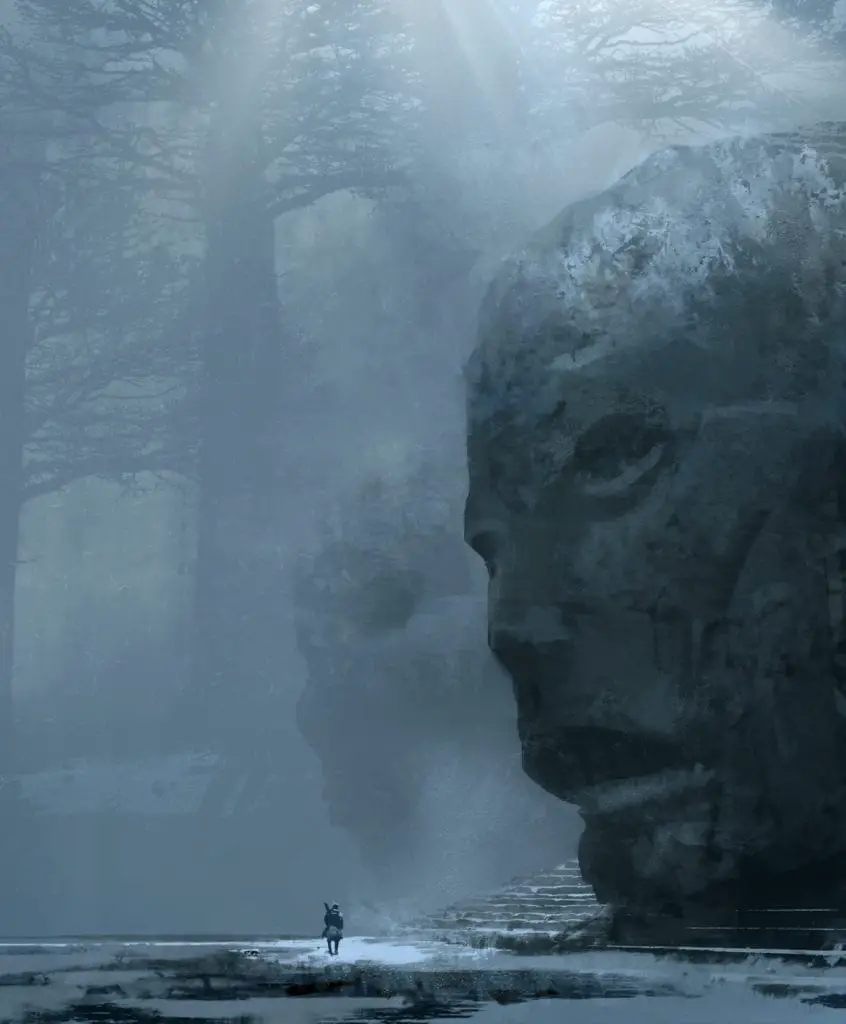
Needless to say, venturing into this charming place is going to be a frequent occupation of player characters. Symbaroum is thus a rather traditional RPG in this way. We have a fantasy land roughly resembling medieval Europe, complete with knights and wizards. Then we have an expanse of dangerous wilderness that adventurers will delve into. Naturally, it’s hardly heroic fantasy, traditional though it may be.
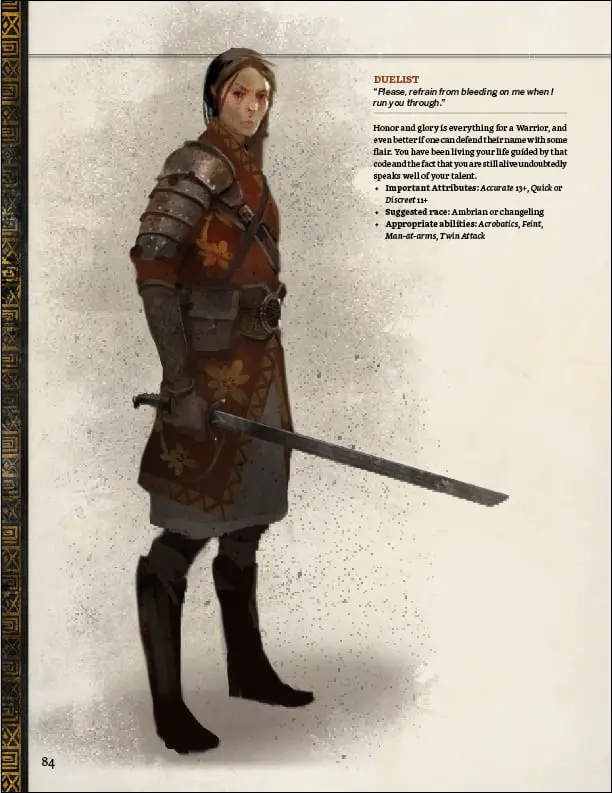
Creating our character begins by selecting an archetype. Those are warriors, rogues and mystics. Each of them is further subdivided into various occupations and, if you’ve read my other reviews, I am not a fan of such a division. “Warriors,” “rogues,” and “mages” may be traditional, but they are also artificial and constraining. They do not encompass the variety of fantasy characters, no matter how people insist they do.
However, the archetypes in Symbaroum escape my usual judgement of this trinity by being largely suggestions. The player does not choose an archetype to derive their abilities from. Rather, each archetype and occupation suggests a selection of attributes and abilities that suit its concept. If the player wants to create a knight, let’s say, they will turn the pages to this occupation in the warrior archetype. There they will see what they should purchase for their character to fulfill this concept.
After picking our archetype, the next step are attributes and abilities. The former form the skeleton of our character and the latter give us extra tricks (see below). Then we pick our race – human, changeling, goblin or ogre. Those aren’t the only sapient races in the world, but they’re the four we can play in the setting from the core book.
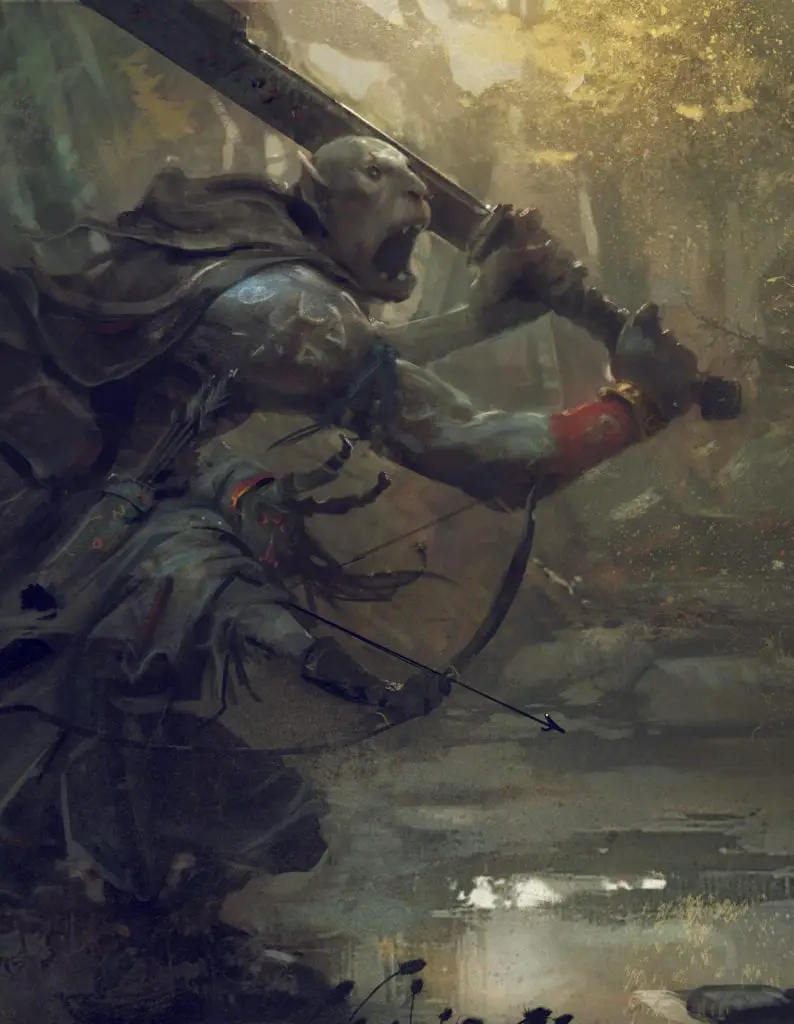
The next step is Shadow, which is unique to this game. It represents a character’s inner nature and strongest spiritual allegiance. The three choices are discipline of civilization, wilderness of nature, and corruption of darkness. A creature’s shadow is visible using supernatural abilities and isn’t necessarily entirely aligned with one of those. Ambria exists on the boundary of civilization and wilderness, while corruption is a manifestation of the clash between those forces.
Finally, we need to assign our character’s equipment, money, personality, and goals. Equipment and money are a necessary piece of book-keeping as usual. Whereas, of course, personality and goals are as important as any mechanical bits. Unlike with other systems, they do not have a mechanical bearing. So that’s how we create our avatar in the world of Symbaroum. What do we do next?
Mechanics
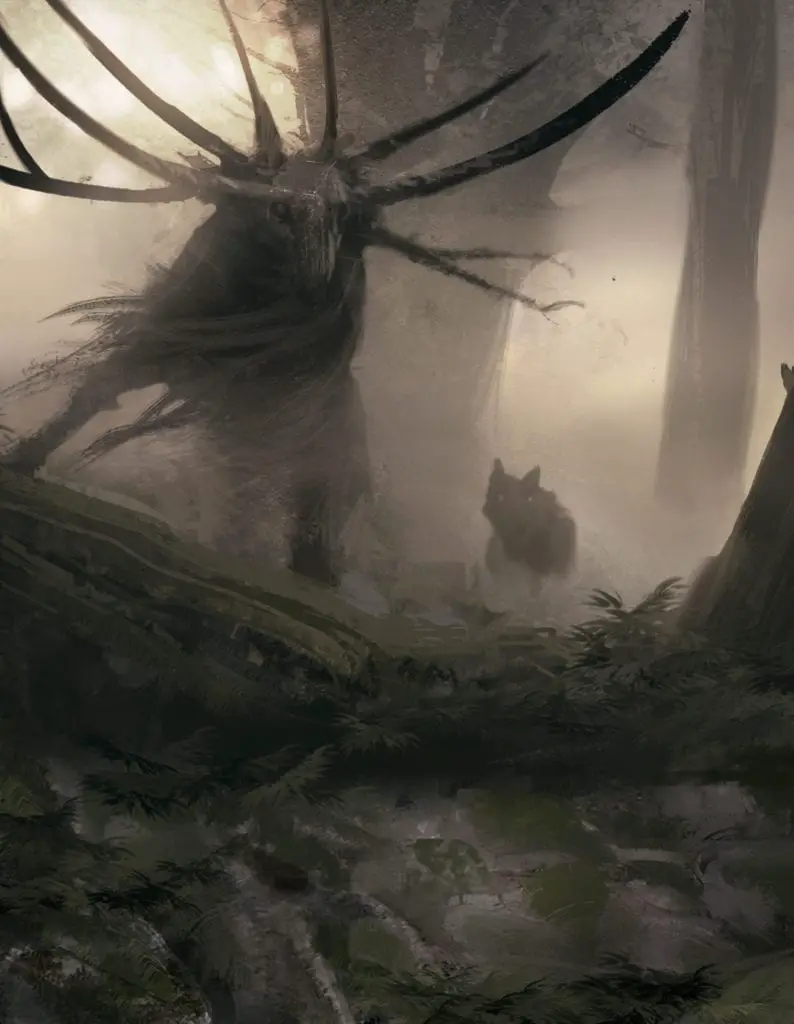
Symbaroum operates on the d20 die roll. The basic resolution is simply to roll against the relevant attribute. Success is a roll equal to or lower than the attribute. Attributes have values from 5 to 15. They do have modifiers, which come into play in opposed rolls. A modifier is simply 10 – the attribute, which of course generates negative numbers when an attribute is above 10. When a roll directly opposes another person, we add or subtract the modifier from our attribute.
The eight attributes are Accurate, Cunning, Discreet, Persuasive, Quick, Resolute, Strong, and Vigilant. It’s a traditional list with some necessary touch-ups. The Accurate attribute representing hand-eye coordination and timing is separate from Quick, which represents reflexes and agility. This avoids the perennial problem of a “dexterity” attribute being better than other physical traits. Strong represents both physical strength and durability. Thus side-stepping the issue of “strength” and “constitution” attributes being less valuable. It’s an increasingly common approach, and one I approve of.
These eight attributes will end up fairly significant, as the game has no skills, as such. Rather, it has a list of abilities. Which do not add to our rolls – instead, they provide us with new ways to use them. Each of them comes in three tiers.
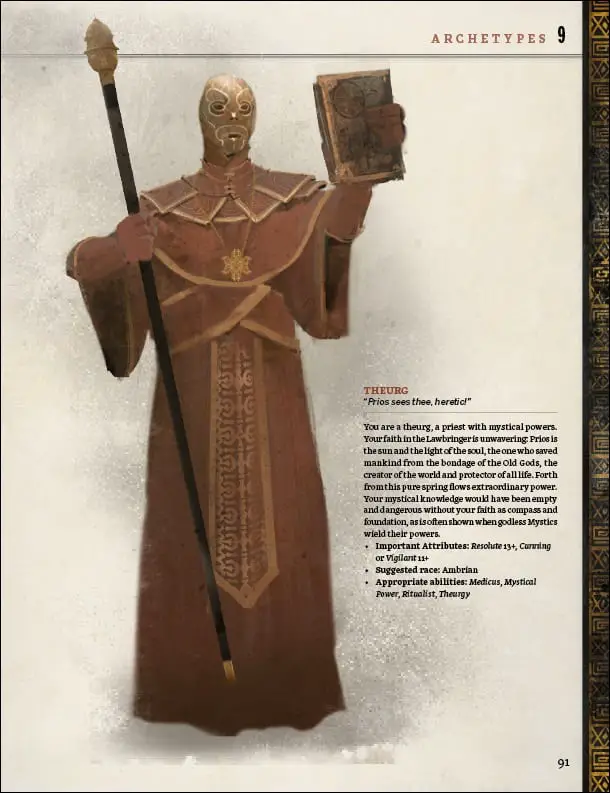
What’s notable is that the abilities are very strongly combat-oriented. There are some that don’t directly affect combat, but many of them affect magic skills instead. This seems odd to me. I realize that this is a fairly traditional system, but devoting this much material to combat strikes me as needlessly limiting. And also a shame, because I genuinely like the idea behind it. I could see it working for non-combat and non-magical skills as well.
Having attributes provide you with the “math” of your rolls, which abilities provide you new ways of rolling and means of changing them makes things a lot cleaner. It adds variety and lets you specialize your character without having to add up quite as many numbers.
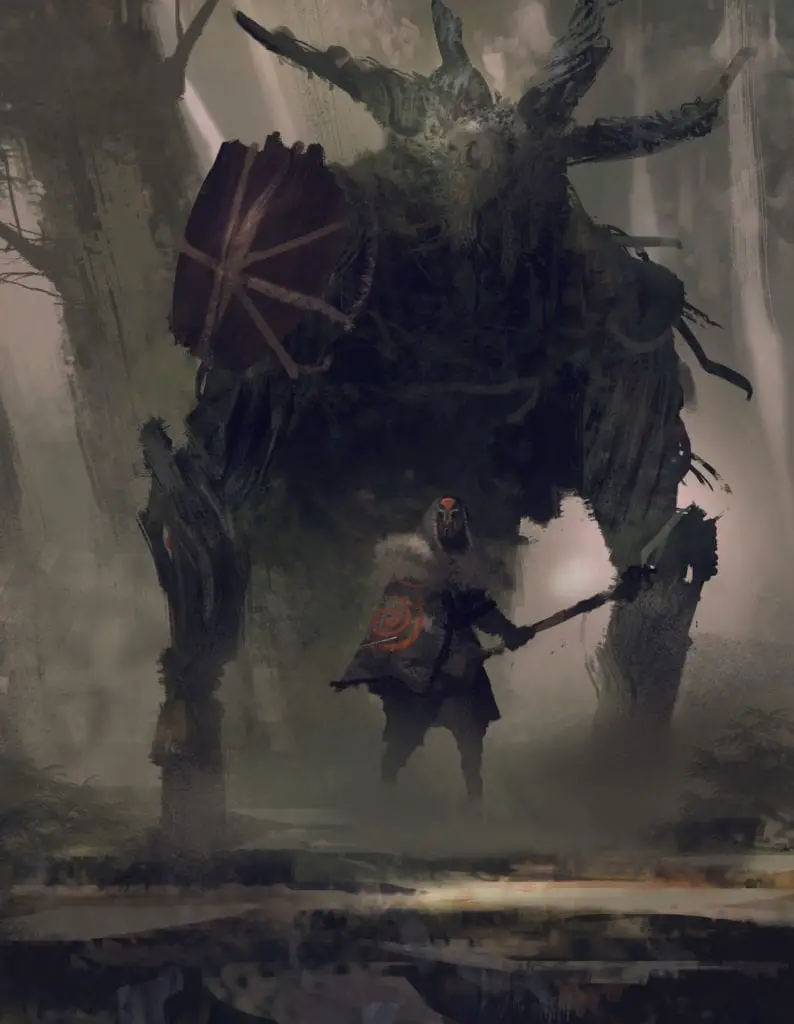
Combat is more or less what you would expect, really. We have a list of different weapons and armor. In order to hit an enemy, we must beat their defense, then we roll damage. Abilities give us ways to act in combat beyond a simple attack roll. What comes across as rather odd to me is that armor is also rolled. I’m admittedly not sure what the reasoning behind it is. It makes sense that armor would protect differently based on where and how you strike it. But isn’t that already part of rolling damage to begin with? It’s difficult for me to say whether this is good or bad without properly testing the combat mechanics, but it’s an extra layer of randomness that I’m uncertain about.
Sadly, other rules for the game continue the combat focus. This isn’t unusual, but it’s somewhat disappointing. I can understand that social encounters, problem-solving, and the like are easier to handle by just role-playing it and rolling when the GM deems it appropriate. And that it’s difficult to put rules around all the manifold situations players can find themselves in. But I have grown to appreciate more in-depth subsystem for social interactions, if nothing else.
Finally, there’s magic. As is, once again tradition, the rules for it are as robust as those for combat. There are four mystical traditions: theurgy, sorcery, witchcraft, and wizardry. However, a character need not practice any of them to purchase mystic powers and rituals. The main advantage of traditions is to help the character avoid corruption when learning and casting spells and rituals.
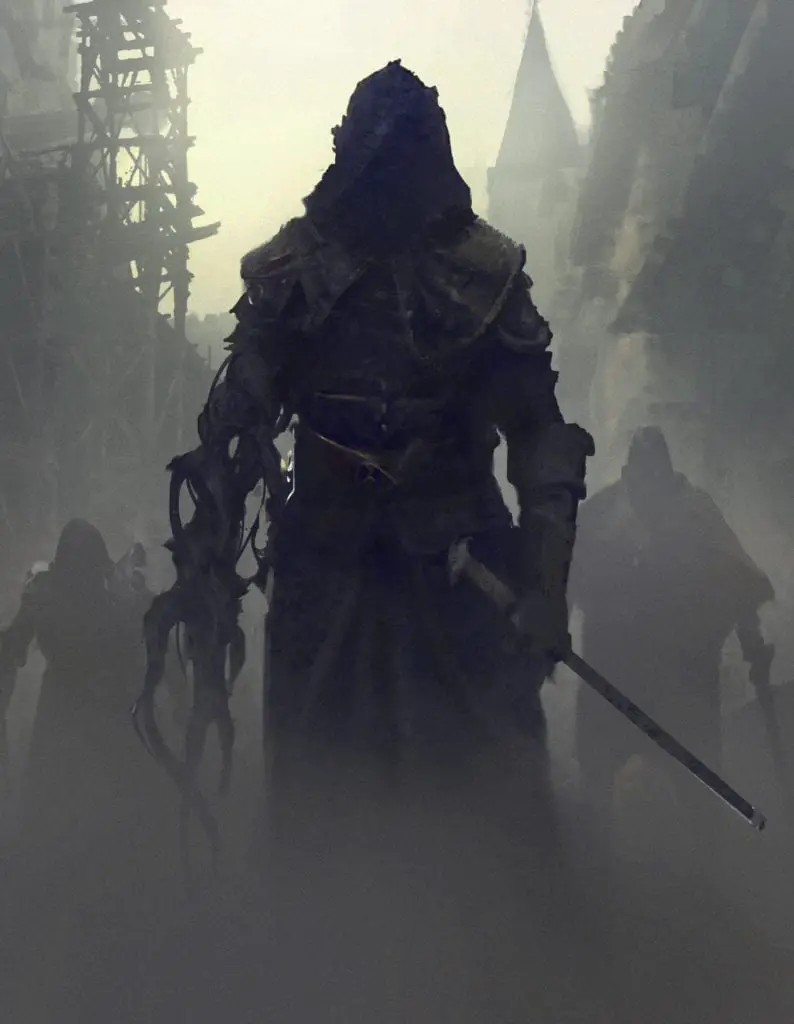
Corruption is a fairly central theme of Symbaroum , defined as an inherent tension between civilization and nature. Mystics of all stripes are the characters most at risk of corruption, as they invite it every time they learn or make use of their powers. That is because their power bends nature to their will and exploits it. Each mystical tradition has its own way of viewing corruption.
World-building
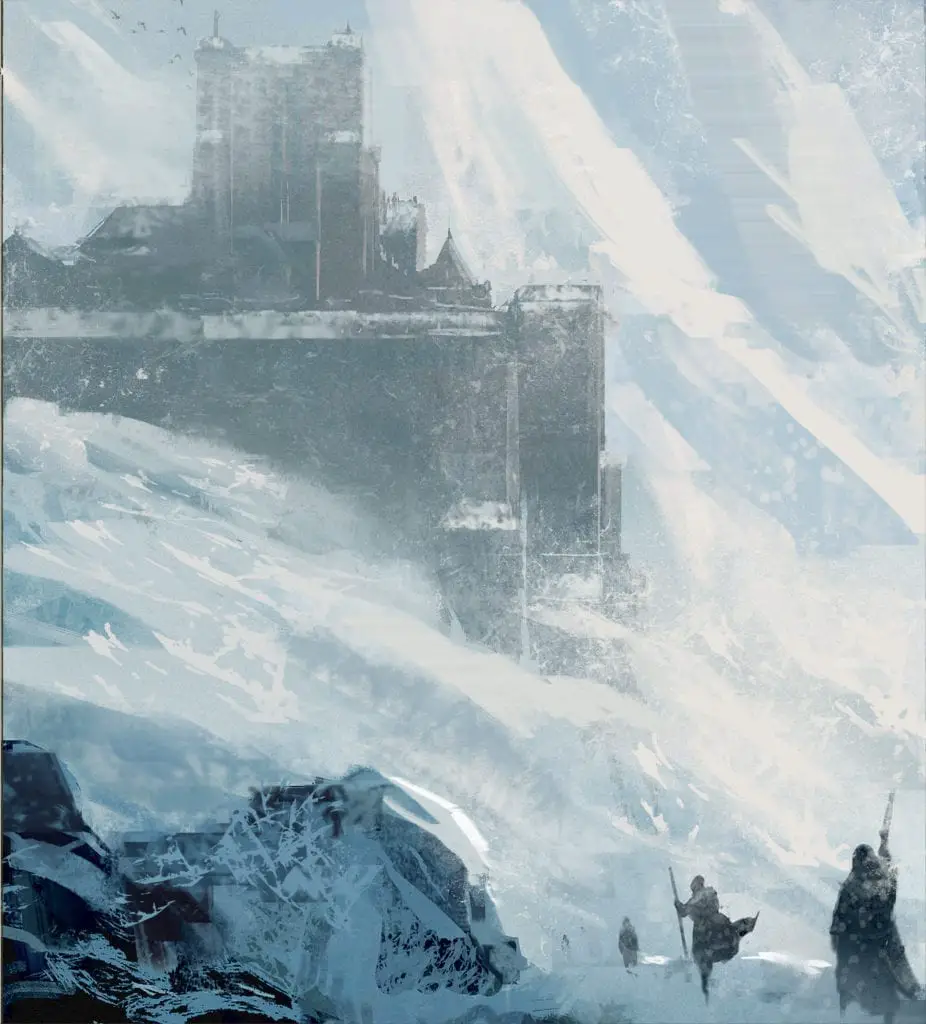
As I mentioned in the presentation section, the book focuses on one particular section of the world, with a promise for more later. Instead of throwing us into a wide world, the game instead paints an in-depth picture of one particular region and its conflicts.
Ambria exists on a boundary between civilization and wilderness, like I’ve mentioned already… except that it’s not quite as romantic as it would be in many a fantasy setting. The arrival of the Ambrians and their subjugation of the native “barbarian” people is very much an act of colonialism.
The book lays out the major factions of the region – the noble houses of Ambria, the church of Prios, the barbarian clans, the army and the Ordo Magica. The last being an organization of wizards.
We also get an overview of several major locales. Thistle Hold is a city on the brink of the dark forest. Ynadros is the capital of the fledgling kingdom. It was built on the ruins of Linadros. The city had stood empty for a long time, and the only inkling as to why are barbarians’ tales. According to them, the population fell victim to an epidemic. Supposedly a divine punishment. Barbarians eventually settled there… then the Ambrians came and took over. Finally, the cliff of Karvosti is a meeting place for the natives.
The focus on one particular slice of the setting gives a certain feeling that there is more to it that we don’t know. Linadros, for instance, clearly has a history, but we don’t know it. The Dark Lords, whose invasion would eventually lead to the Ambrian exodus, are mentioned vaguely, but their impact can be felt.
Aside from the more mundane factions and conflicts stands Davokar. Or rather, not aside — the looming forest casts its shadow on all that surrounds it. It is, in many ways, a centerpiece of the setting that we see in the book. It embodies the theme of conflict between civilization and wilderness.
As with many parts of the setting, opinions will differ on just what the forest is. The practical considerations are simple enough. It’s deep, dark, and full of monsters. But why is it so? The witches would tell you that the forest itself is alive. The wizards would dismiss such notions. Whatever the reason, the depths of the woods are full of darkness both mundane and metaphysical. This darkness breeds monsters.
Of course, as I mentioned in the initial section, the Ambrians are not going to leave the forest well enough alone. The natural resources and ruins within draw them like moth to a flame. This is not only dangerous because of the monsters and wilds, but also because of elves. Symbaroum’s elves are less like typical fantasy ones and more like fair folk of legend. They guard the woods of Davokar and treat any incursion as an act of war. Their motives for doing so are vague at best.
All this is of course to create a hostile environment for the player characters to delve into and try to survive in. At this task, the world-building of Davokar succeeds quite well.
Accessibility
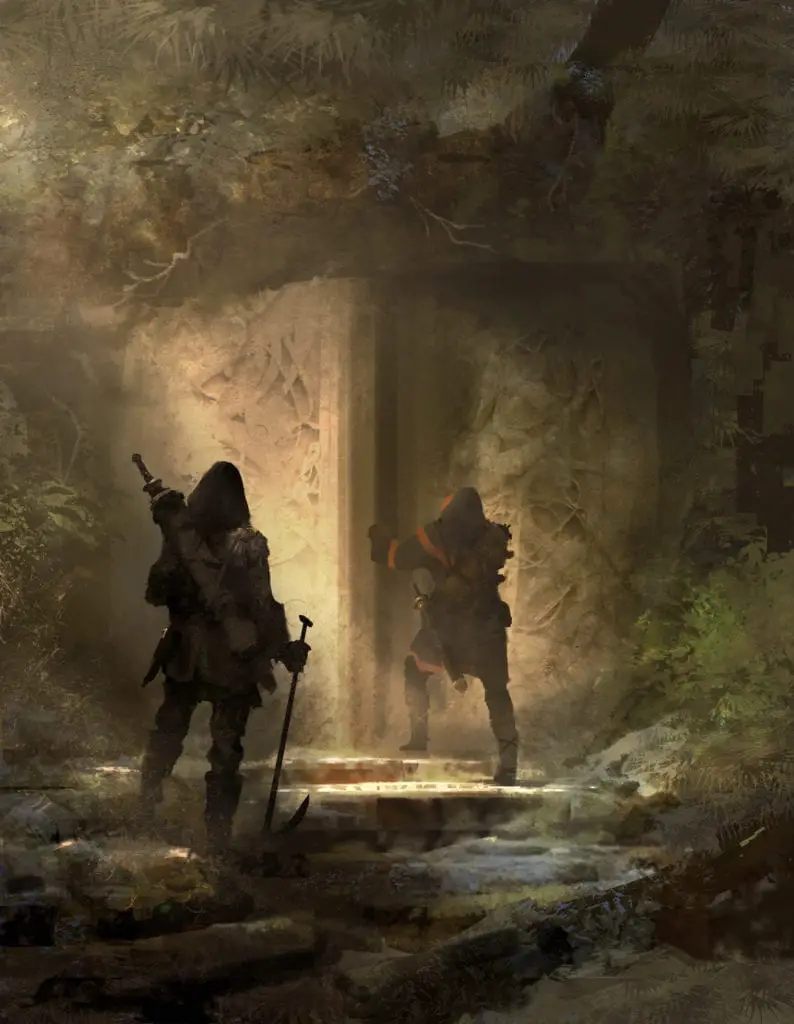
Symbaroum is notably on the heavier side than Liminal was, but it’s still not heavy as even fifth edition Dungeons & Dragons, I would say. Information is presented to players on a fairly comprehensible as-needed basis, though there were a few times where I felt like I didn’t have enough context.
All in all, however, Symabroum is fairly accessible as far as role-playing games go. The rules are split between those for players and those for GMs. In world-building and narrative terms, the book doesn’t overwhelm us with information. We get what we need to orient ourselves, but no lengthy histories and lists.
Verdict
As I have mentioned a few times. Symbaroum uses a world-building tool that I’m quite fond of. Which is to say asking questions without providing definite answers. The titular Symbaroum civilization is one such question — it fell, but opinions differ on how and why.
If someone is looking for a fairly typical and traditional medium-crunch RPG, with a darker and more down-to-earth feel, Symbaroum looks to be a choice worthy of consideration.
You can pick up the Symbaroum Core Rulebook on the Modiphius shop, where it retails for $42.99 (and includes a pdf download), or just the PDF for $15.99. You can also pick up supplementary materials like the Advanced Player’s Guide, multiple adventures and maps, and special cards for abilities and monsters.
Images Courtesy of Modiphius Entertainment


